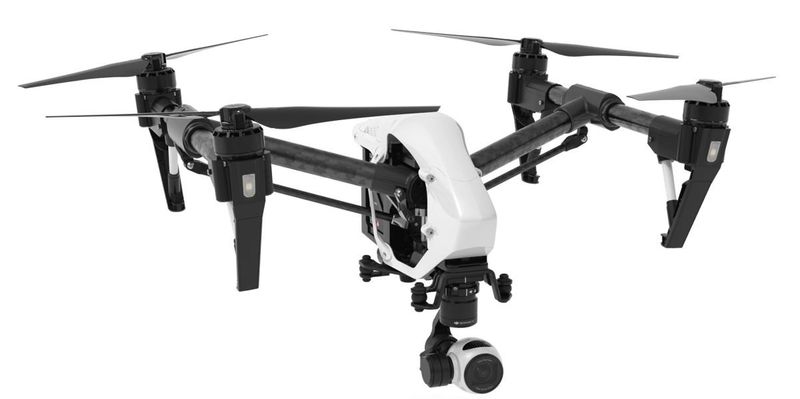
On the evening of November 18, at the top of a mountain in Xinjiang, 1,000 meters above sea level, snowflakes were flying and the temperature was minus 20 degrees Celsius. Hydrogen Aviation Technology’s hydrogen-powered multi-rotor UAV is conducting low-temperature flight tests here. At 20 o’clock, everything was ready. Hydrogen Rotary 4 started according to the preset procedure, took off and climbed, and hovered steadily at the predetermined altitude. The flight data of the aircraft is continuously transmitted back to the ground.
“The power is normal, the voltage is normal, and the temperature is normal.” The ground station observer kept reporting various data.
“Turn on the lights.” The remote switch ignited the onboard 300-watt lighting. Bright lights illuminate this small quiet mountain top in the Tianshan Mountains.
At this time, the technicians know that the fuel cell is silently undergoing a greater power output test.
After 30 minutes, the drone landed slowly. Testers quickly performed physical inspections of the fuselage, engine room, exhaust vents, fans, and stack air intakes.
“There is no icing at the exhaust port, no water inside or outside the engine room, and even temperature distribution throughout the stack.”
The test was a complete success! The smiles of all the participants solidified under the snowflakes, congratulating each other and turning into white air, and the hard work of more than a year instantly turned into gratifying data and results.
Because the fuel cell relies on the combination of hydrogen and oxygen to generate water to generate electricity, the water will freeze below zero, blocking some mass transfer channels and affecting the operation of the stack. In addition, the ultra-low temperature and huge temperature difference also test the low-temperature mechanical properties of membrane electrodes and control devices. The mainstream international recognition is that the working environment temperature of air-cooled fuel cell stacks should be between 5°C and 35°C. At present, there are no reports of hydrogen-powered multi-rotor aircraft flying at -20°C.
See Also: Top 10 Drone Brands in China
After more than a year of hard work, Hydrogen Aviation Technology has developed a highly adaptable fuel cell with proprietary technologies such as carbon nanoporous stacking technology. The management of hydroelectric heating and mass transfer is more precise and controllable, and the power density of the stack has been increased. 40%. The advanced SMART BMS technology and the integrated design of the cabin and the environmental cabin enable the aircraft to more effectively manage the environmental parameters such as temperature, humidity and air intake. The combination of these technologies allows hydrogen power to start safely and quickly and fly smoothly in low temperature environments. During the test, the aircraft can not only fly normally, but can also drive 300W emergency lights, which proves that the aircraft has sufficient power redundancy and excellent stack performance.
The flying platform for this test is the newly developed distributed hydrogen-powered multi-rotor UAV-Hydrogen Rotation IV. The aircraft is equipped with two 1700W air-cooled fuel cells, the longest endurance time can reach 4.5 hours, can mount 300W emergency lighting, photoelectric pod, megaphone, throwing device and other common task loads, such as lidar, tilt camera, Ideal platform for laser gas inspection equipment. The aircraft used in this test has just achieved excellent results in the laser methane inspection test of an oil and gas customer.
The success of this low-temperature test is of great significance in the aviation application of hydrogen fuel cells, setting a new record for hydrogen fuel cell as aerospace power, expanding the possibility of more application scenarios of hydrogen fuel cell aircraft. Related technologies will be quickly implemented as products and patents in Hydrogen Aviation Technology, once again confirming China’s international leadership in the field of hydrogen-powered drones.
Zhejiang Hydrogen Aviation Technology is a company dedicated to the design, development and manufacturing of new fuel cells and low-altitude long-endurance drones.
In the broad application prospects of fuel cells, we take value and maturity as considerations, and choose the UAV industry with the most application advantages of fuel cells as the entry point to open up a broad hydrogen-powered aircraft market, including the current hydrogen-powered UAVs Products and the next stage of hydrogen-powered flying cars. At the same time, our hydrogen fuel cells can also be widely used in new energy vehicles, robots, unmanned ships, submersibles, and emergency power generation.
We are committed to research and development of lightweight, efficient and reliable fuel cell and hydrogen fuel cell powered aircraft, so that hydrogen powered aircraft will take us into a clean, environmentally friendly, and electric free future world.